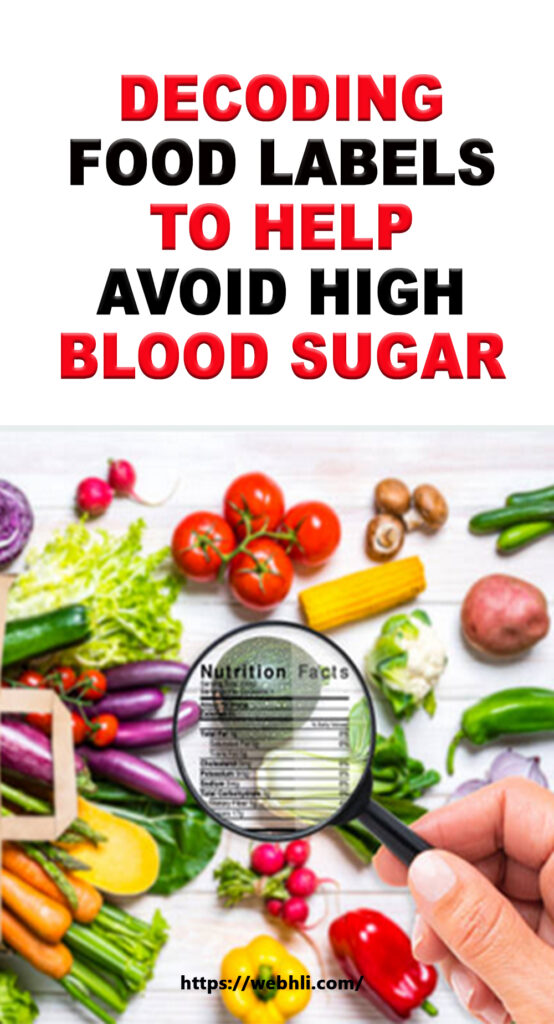
Living with Type 2 diabetes, it's imperative you become familiar with the foods you eat - not just in the foods you cook at home, but in the foods you buy already boxed and packaged at the market.
Next time you're at the market, take a look at the packaged foods you regularly buy. Cookies, chips, lunch meats, cereals - they all have a label on the package that is your key to understanding if it's a food you should be eating or not.
The nutrition label is the most recognized by people, as it reflects the overall fat, calories, carbohydrates, and other nutrients within a serving. This label is what most people are interested in reading, and it's worth you becoming familiar with it also.
Check out these related articles, too:
How Resistance Training Can Help You Heal Diabetes
Diabetic Breakfast Meal Planning, Truth Revealed!
Weight Loss and Blood Sugar Control
Arthritis And Diabetes - A Double Whammy
What Is Diabetic Gastroparesis?
Healthy Lifestyle Tips For Type 2 Diabetes
Does protein increase blood glucose levels?
How Does Diabetes Affect My Teeth and Gums?
As a Type 2 diabetic, you'll want to choose foods that have relatively low calories and fat content. When considering the amount of fat a particular food contains, be aware fat-free foods are not necessarily healthy choices. These foods are often full of extra sugars and starches to make up for the lack of flavor and texture butter, or oil would typically provide, so they often wreak havoc on blood sugar levels. Instead, choose options that contain healthy fats (and a balance of fiber and whole grains), which can improve heart health. Avoid products that have saturated and trans fats, which can lead to increased cholesterol levels.
Another critical nutrient you should pay attention to is the carbohydrate amount in a product that is broken down into sugar, complex carbohydrate, and fiber. You might be compelled to skip ahead and just look at the overall sugar content of a food - don't. There are plenty of healthy foods like milk and fresh fruit that contain natural sugars and will provide a certain amount of sugar, but they will be balanced by a healthy proportion of fiber also. Likewise, sugar-free food products may still have a significant portion of overall carbohydrate composition while containing little or no fiber at all, and these need to be avoided.
For foods with five or more grams of fiber, the American Diabetes Association recommends subtracting the fiber grams from the overall carbohydrate count to get a better picture of affecting carbs. Be aware it's recommended eating at least 25 grams of fiber a day for optimal stomach health and blood sugar stability.
Aside from the nutrition label, get in the habit of reading ingredient lists - there are a few ingredients you'll want to avoid eating altogether. When it comes to carbohydrates and grain products, choose products that contain the following at the very top of the ingredients list...
- 100% whole,
- whole grain,
- whole wheat,
- 100% whole wheat.
These food labels reflect the grain is whole and will be balanced with fiber. Avoid products that list flours as refined or enriched which mean the flour has been processed and refined. These ingredients are often found in white bread, pasta, and cakes and they can be damaging to your blood sugar levels.
Also, take a peek at what type of fats are in the food. As stated earlier, healthy fats shouldn't be avoided; they'll be listed as...
- olive oil,
- peanut oil,
- sunflower oil, or
- other healthy vegetable oils.
Avoid products that contain anything "hydrogenated" or "partially-hydrogenated" as they are high in both saturated and trans fats. Both lead to increased cholesterol levels and can put your heart health at risk.
Although managing your disease can be very challenging, Type 2 diabetes is not a condition you must just live with. You can make simple changes to your daily routine and lower both your weight and your blood sugar levels. Hang in there, the longer you do it, the easier it gets.
Check out these related articles, too:
Good Energy Food for Diabetics
10 Simple Food Concepts Every Person Living With Diabetes Should Know
Making Cheesecake For Diabetics
Enjoy the Taste and Benefits of Diabetic Foods
Will The Mulberry Leaf Help Your Diabetes?
5 DIABETIC FRIENDLY SALADS Some Tasty
DIABETIC LEMON COCONUT COOKIES Some Tasty
For nearly 25 years Beverleigh Piepers has searched for and found a number of secrets to help you build a healthy body. Go to http://DrugFreeType2Diabetes.com to learn about some of those secrets.
The answer isn't in the endless volumes of available information but in yourself.
Article Source: http://EzineArticles.com/9235259

 Protected by Patchstack
Protected by Patchstack